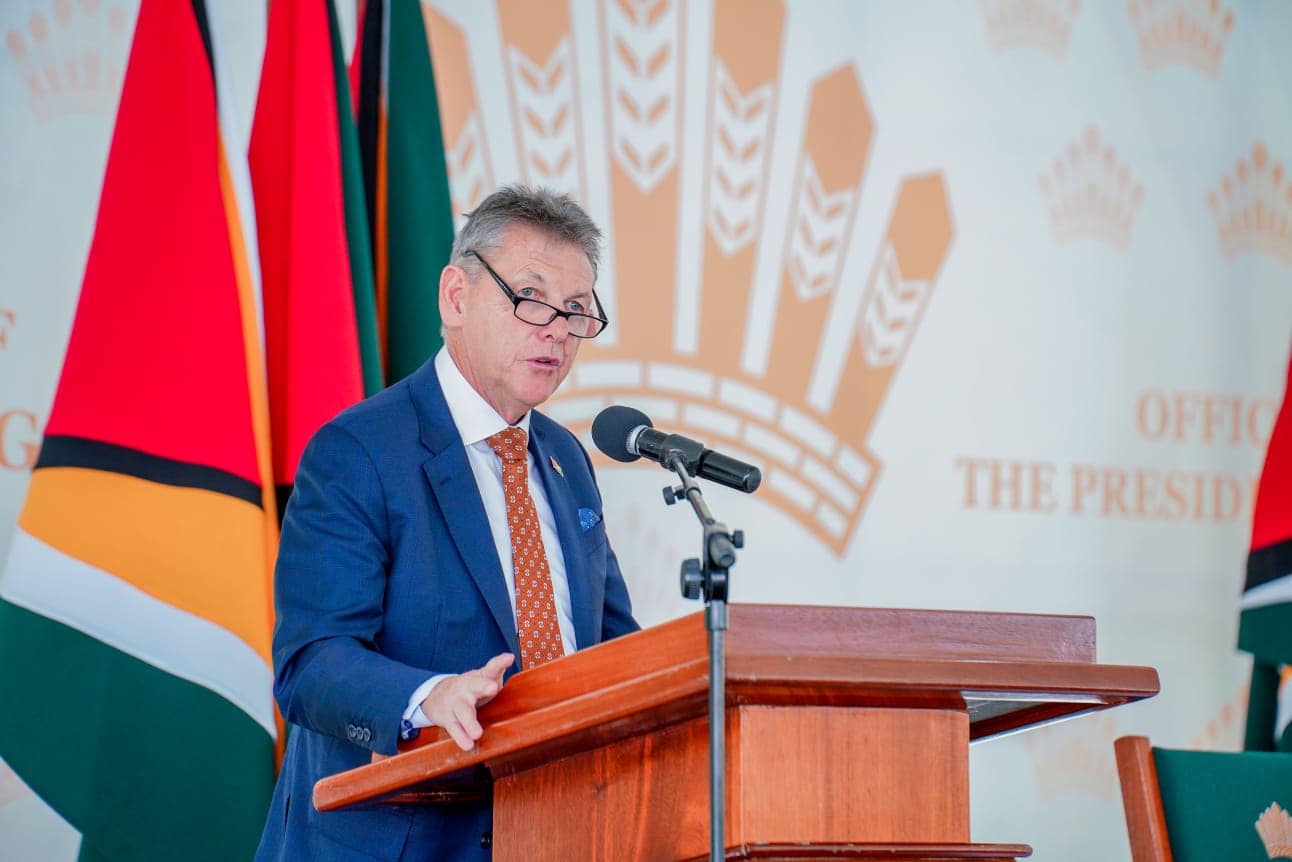President of ExxonMobil Upstream Company, Liam Mallon, speaking at an event at State House in Georgetown on Thursday, said he is extremely proud of the work ExxonMobil has done in Guyana, and extremely hopeful for the future and the prosperity that it will bring to the new oil producing South American country.
“There is literally nothing in the world that I can think of, that I’ve worked on – and I always say this to my colleagues that work with me, that they will ever work on – that’s as exciting as what we’ve got here in this country today.”
– Liam Mallon, President, ExxonMobil Upstream Company
Mallon said that just seven years ago, Guyana was a frontier area, with no significant discoveries.
“It’s gone from being a frontier area to being one of the most prolific areas in the world,” he exclaimed.
Production started at the Liza Phase 1 Development in December 2019, just a few years after the discovery. Mallon said, “Think about all that happening in basically five years – the average in industry for this type of operation is nine plus.”
Since 2015, the company has made over 30 discoveries in the Stabroek Block, amounting to nearly 11 billion oil-equivalent barrels. Thus far, four projects have been approved, two of which are already producing with capacity of 360,000 barrels of oil per day (bpd). When all four are operational, production levels will surpass 800,000 bpd. But ExxonMobil’s line of sight goes much further. It plans to have six floating production, storage, and offloading (FPSO) vessels operating offshore by 2027, with production exceeding 1.2 million bpd. The co-venturers, including Hess and CNOOC, believe the resources commercially available could support 10 FPSOs operating altogether.
Mallon underscored that amidst this rapid development, ExxonMobil’s goals will ensure it provides sustainable solutions that improve quality of life and meet society’s evolving needs.
“We fundamentally believe that in the energy mix and the transition that’s evolving, that oil and gas will remain a critical component of that mix regardless of the scenario,” he said. “And really importantly, we can produce oil and gas as a responsible company and at the same time, lower emissions and meet the goals of the Paris agreement.”
The Stabroek Block partners have noted how critical the low-impact, low-cost barrels will be to make sure the world achieves the energy transition. In Guyana’s case, the government is making ample use of oil revenues and the excitement surrounding this industry to grow its economy within the environmentally conscious principles outlined in its Low Carbon Development Strategy (LCDS) 2030.
Mallon said Guyanese should be extremely proud of what Guyana and ExxonMobil have accomplished. He added that it is still early days, and he is optimistic about what is to come.



